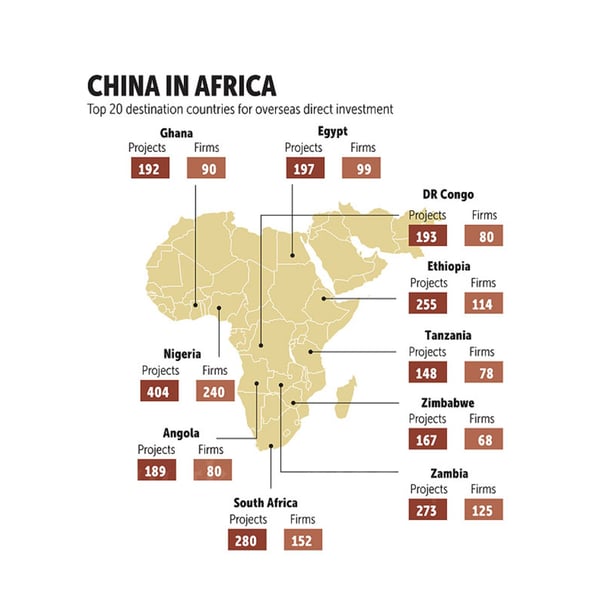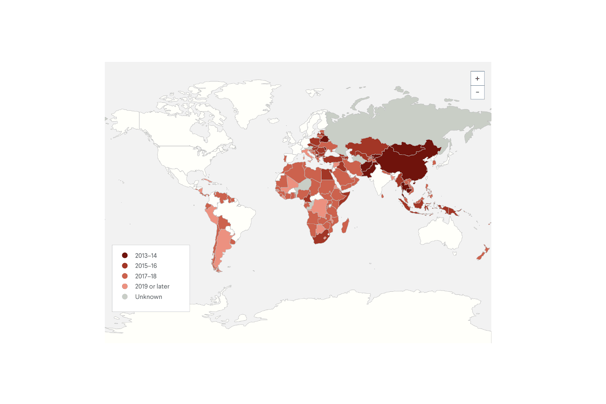Africa-China Relations: A Deep Dive into the Mining Sector
China's growing investment in Africa's mining sector is reshaping global resource dynamics, driving economic growth while raising concerns about sustainability and economic dependency.
AFRICA-CHINA BUSINESS
Harriet Comley
3/6/20253 分钟阅读
The Rise of China’s Mining Investments in Africa
China’s engagement with Africa’s mining sector dates back to the 1980s, but in recent decades, the scale and scope of investment have grown exponentially. Driven by its insatiable demand for minerals, China has poured billions into Africa’s resource-rich regions, leading to increased production and economic activity. However, these investments have also sparked concerns over environmental sustainability and economic dependency.
Where is China Investing?
In 2023 alone, China invested more than US$16 billion in overseas mining projects, with Africa being a key focus. The country is particularly interested in minerals essential for industrial production and technology, including cobalt, copper, gold, bauxite, and lithium.
Key African Countries with Chinese Mining Investments:
Democratic Republic of Congo (DRC), Zambia → Cobalt, Copper
Guinea, Ghana, Sierra Leone → Bauxite, Gold
South Africa, Zimbabwe → Platinum, Chrome
Tanzania, Mozambique → Graphite, Uranium
Central and Southern Africa, particularly Zambia, Tanzania, and Mozambique, have become hotbeds for Chinese investment, thanks to their vast reserves of copper, iron, gold, and other valuable metals.
The Scale of Chinese Investment
Chinese investment in Africa’s mining sector has steadily increased, reaching US$9.76 billion by 2022, accounting for 23.8% of China’s total foreign direct investment (FDI) stock in Africa. This makes mining the second-largest area of Chinese FDI in Africa, trailing only construction.
Copper remains the primary target for Chinese mining companies, followed by aluminum and iron. The minerals trade plays a crucial role in Africa-China relations, with mineral fuels, ores, precious stones, and base metals forming the backbone of exports from Africa to China.
Although Chinese mining firms account for only 8% of Africa’s total mining output, they have rapidly expanded their footprint. In the last five years alone, Chinese mine ownership in Africa has increased by 21%, in contrast to declining investments from Western nations like the U.S., Australia, and Canada
The Belt and Road Initiative (BRI): A Game Changer
China’s Belt and Road Initiative (BRI) has played a transformative role in facilitating mineral exports from Africa. This ambitious global infrastructure project, launched in 2013, aims to connect continents through massive investments in roads, railways, and ports. Originally designed to link East Asia with Europe, the initiative has expanded into Africa, Latin America, and Oceania, reshaping global trade networks and deepening China’s influence.
So far, 147 countries have joined the BRI, covering two-thirds of the world’s population and 40% of global GDP. While some view the BRI as a positive force for economic growth, others express concerns over potential debt traps and geopolitical maneuvering. The U.S. and several Asian nations worry that the initiative could serve as a Trojan horse for China’s broader strategic ambitions, including military expansion.
Looking Ahead: Challenges and Opportunities
China’s growing presence in Africa’s mining sector presents both opportunities and challenges. While investment has driven infrastructure development and economic growth, it has also raised concerns about debt dependency, environmental degradation, and labor practices. Moving forward, African nations must navigate these partnerships carefully to ensure that mining investments lead to sustainable development, fair trade agreements, and economic empowerment for local communities.
As China continues to solidify its stake in Africa’s resource sector, the coming years will determine whether this partnership will yield long-term benefits or deepen economic vulnerabilities. One thing is clear: the Africa-China mining relationship is set to remain a pivotal force in global resource dynamics for years to come.
Figure 1. The Belt and Road Initiative Official Participants by year of joining.
Figure 2: Chinese projects and firms participating in foreign direct investment in Africa. [Source: EY Attractiveness Programme, 2017]




